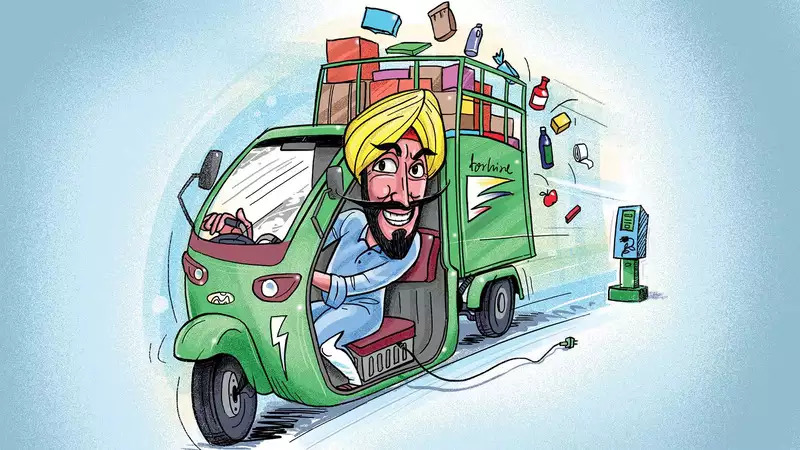The share of services in India\’s GDP has shot up to 46.6 per cent, leaving the share of industry far behind at 27 per cent. Is this healthy or unhealthy? Optimists feel India has successfully leapfrogged over the conventional transition which goes from agriculture to industry and then to services. Pessimists think the new pattern shows India has failed to industrialise and create jobs in manufacturing, forcing the unemployed into informal service activities like roadside hawking.
I am more an optimist than pessimist. True, our stupid industrial and labour policies keep industrial growth and employment far below our potential. But the notion that services are some sort of waiting room for industrial employment is an old left-wing myth that needs to be demolished.
For all their criticism of materialism, Marxists states believed that true wealth lay in materials, and that services were merely an adjunct to goods. This is why the Soviet Union never measured Gross Domestic Product, and only measured Gross Material Product, leaving out services.
Many leftists continue to regard services as a mere hand-maiden of goods, and service employment as waiting room for the industrial unemployed. This is rubbish. Hong Kong has skyrocketed from poverty to become richer than Britain by taking its services to a whopping 83 per cent of GDP. Singapore\’s ratio is 64 per cent. Services have proved an engine for fabulous prosperity.
The sort of services dominant in Hong Kong and Singapore are very different from those in poor countries, but they all started from the same point. Even in poor countries the share of services has been rising fast. India\’s services share of 46.6 per cent is lower than that of Pakistan (50 per cent), Bangladesh (52 per cent) or Sri Lanka (52 per cent). It is lower than the share of services in Latin America (55 per cent) or even sub-Saharan Africa (48 per cent).
SERVICES AS PROPORTION OF GDP (%)
1980 1995 India 36 41 Pakistan 46 50 Bangladesh 34 52 Sri Lanka 43 52 Latin America 51 55 Sub-Saharan Africa 38 48
Source: World Development Indicators 1995
The share of industry seems high in many Communist and ex-Communist countries because their traditional statistical were not designed to capture services. The share of industry is also 30 to 40 per cent in some East Asian miracle economies, showing that industry can in-deed be a formidable driving force, and that we have failed on this front in India. However, even in East Asia the share of services is rising fast.
The global upsurge in services has been driven by technological change. Technology has slashed the labour content of goods. Few major manufactures now have a labour content of over 10 per cent. The car industry was once viewed as a big employer, yet the labour content of a Maruti is now down to 2.5 per cent. An old steel plant like TISCO\’s employed 70,000, a new steel plant like Essar\’s employs less than 2,000. Mechanisation has shifted millions from industry to services.
Second, leisure time has increased greatly with a fall in working hours the world over, and greater leisure is being utilised for the consumption of services like entertainment, travel, tourism and spectator sports. Today an Indo-Pak cricket match in Toronto can attract audiences of millions through satellite TV, whereas a packed cricket stadium in the 1970s could accommodate only 30,000 viewers.
Third, technological change has greatly reduced use of materials and energy. A typical turbine or car now uses half the energy it used to in 1970. The amount of tin needed for tin plating has fallen by three-quarters, tensile steel wires are replacing steel bars in construction, super-light plastics are replacing conventional ones, telecom is shifting from copper cables to the air-waves. Less and less materials are needed for higher living standards, pushing down the share of industry in GDP. This is an excellent thing from an environmental viewpoint: the world guzzles much less materials and energy per dollar of GDP.
Pessimists fear that mechanisation means unemployment. Yet the entire rise in living standards in the last century has been based on increased mechanisation, which alone enables incomes to grow. In the most mechanised country of all, the USA, unemployment has fallen to record lows. After years of relative decline when its economy hinged on traditional industry, the US has now experienced a runaway boom in the 1990s based on knowledge-based services and goods. The share of services in its GDP has risen to 72 per cent. This is the driving force of the US economy.
What sort of services are increasing their share in India? Trade, transport, hotels, communications, banking and finance. As I explained in last week\’s column, modern telecom enables clerical and professional jobs to shift from the West to India.
Normal office operations of a US firm need no longer be performed in the US, they can be shifted to skilled Indians through telephone and internet links, at a fraction of the wages paid in the US. NASSCOM estimates that a million service jobs of this sort will be created in the next decade, paying more than most jobs in industry.
This still does not excuse our dismal failure to create a competitive international manufacturing base and millions of industrial jobs. Still, the growth of services is a silver lining. Do not criticise it, cherish it.




